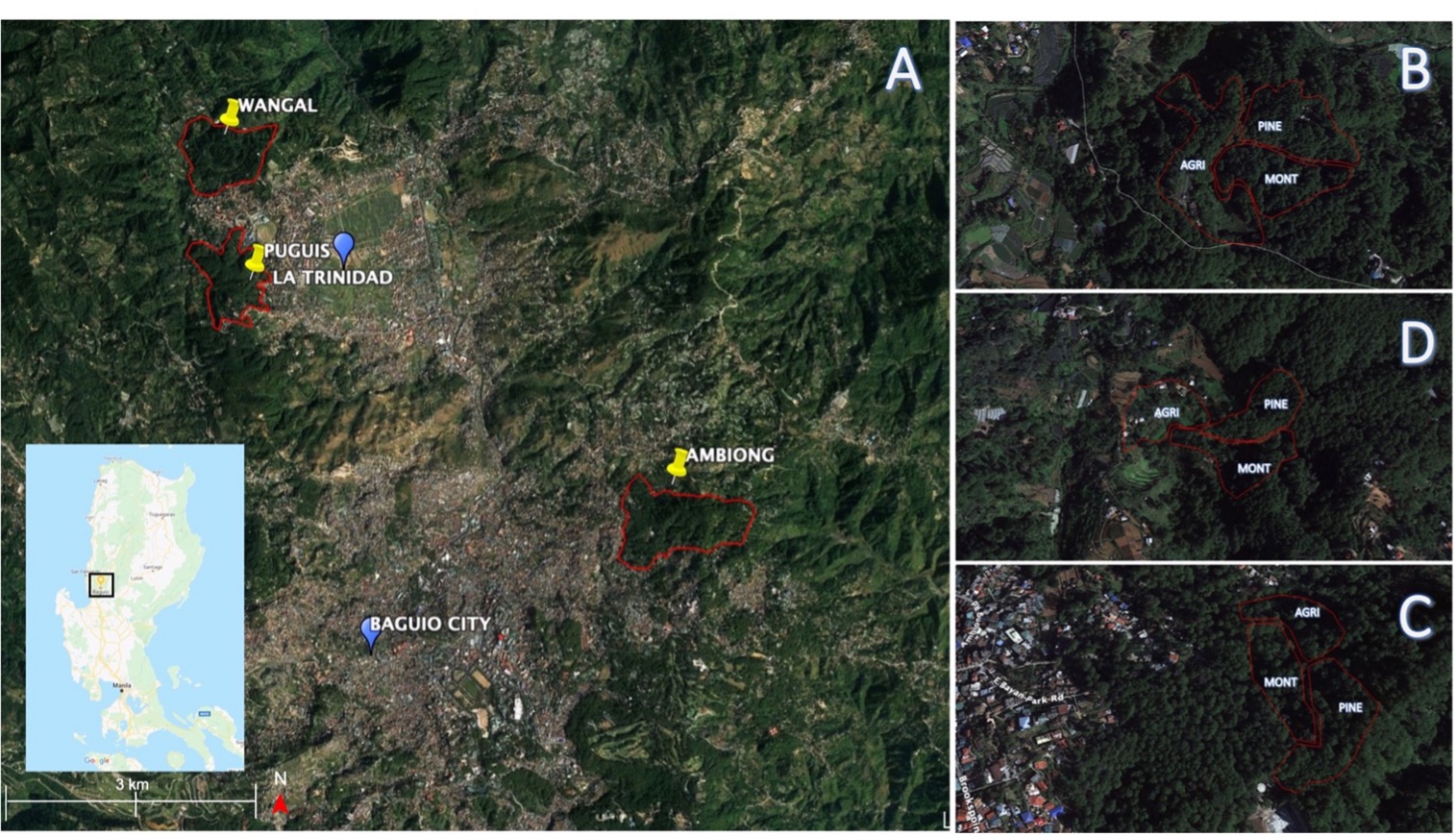VOLUME 14 NUMBER 2 (July to December 2021)

SciEnggJ. 2021 14 (2) 282-290
available online: December 19, 2021
*Corresponding author
Email Address: aareginaldo@up.edu.ph
Date received: August 13, 2021
Date revised: November 23, 2021
Date accepted: December 12, 2021
ARTICLE
A report on the small mammals in mixed-use urbanized habitats in the southern Central Cordillera, northern Luzon
Aris A. Reginaldo*,1, Perry S. Ong†,2, and Lawrence R. Heaney3
1Department of Biology, College of Science,
University of the Philippines, 2600 Baguio City, Philippines
2Institute of Biology, College of Science, University of the Philippines
Diliman, Quezon City 1101, Philippines
2Field Museum of Natural History, 1400 S Lake Shore Drive, Chicago, IL
60605, USA
University of the Philippines, 2600 Baguio City, Philippines
2Institute of Biology, College of Science, University of the Philippines
Diliman, Quezon City 1101, Philippines
2Field Museum of Natural History, 1400 S Lake Shore Drive, Chicago, IL
60605, USA
The effect of habitat disturbance on small, non-volant mammals in the Philippines is little known. From January to March 2019, we surveyed small mammals in three pine-dominated forest fragments in the southern Central Cordillera to identify the species present and describe habitat use. In each study area, two were in La Trinidad, Benguet Province and one in Baguio City, we trapped in three adjacent areas of disturbed habitats (remnant montane broad-leafed forest patches, pine stands, and agricultural areas). In a total of 10,593 trap nights, we recorded eight species: five native species (Apomys musculus, A. abrae, Bullimus luzonicus, Chrotomys whiteheadi, and Rattus everetti) and three non-native species (Suncus murinus, R. exulans, and R. tanezumi). Seven of the species (five native species) were recorded in Wangal; six species (three natives) in Puguis; and five species (two natives) in Ambiong. Apomys abrae and S. murinus used remnant montane forest patches more commonly than the other habitats. Notably, C. whiteheadi, R. everetti, along with R. tanezumi, were often recorded in the agricultural areas. The set of species is quite remarkable in that native species have persisted in heavily disturbed landscapes in that native species persisted. Disturbance facilitates the establishment of non-native pest species, and their presence may aggravate the adverse effects of disturbance on native species, in addition to causing harm to human activities. Improving habitat quality in pine-dominated forest fragments and controlling the pest species may help facilitate the recovery of native mammal populations.
© 2025 SciEnggJ
Philippine-American Academy of Science and Engineering